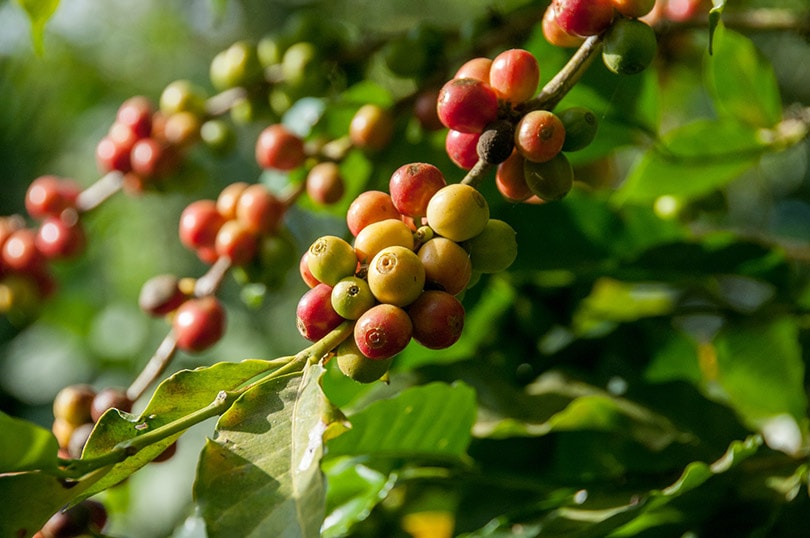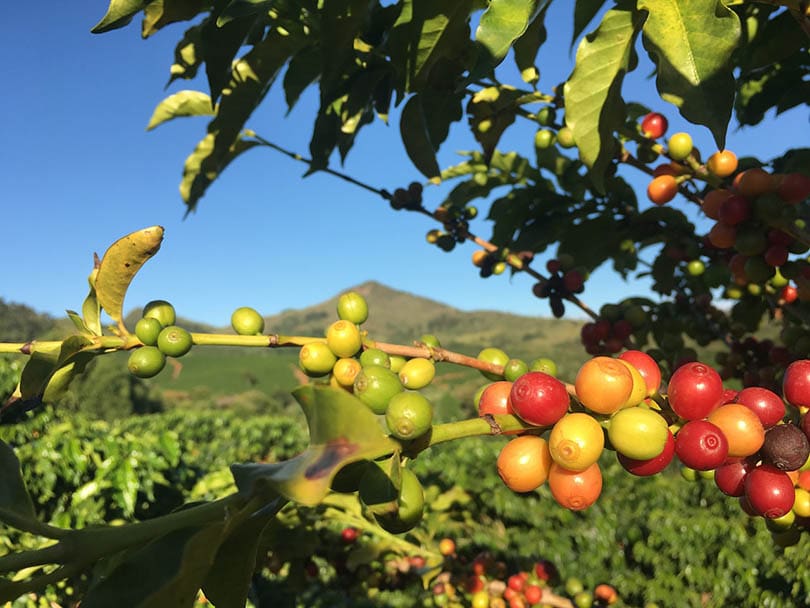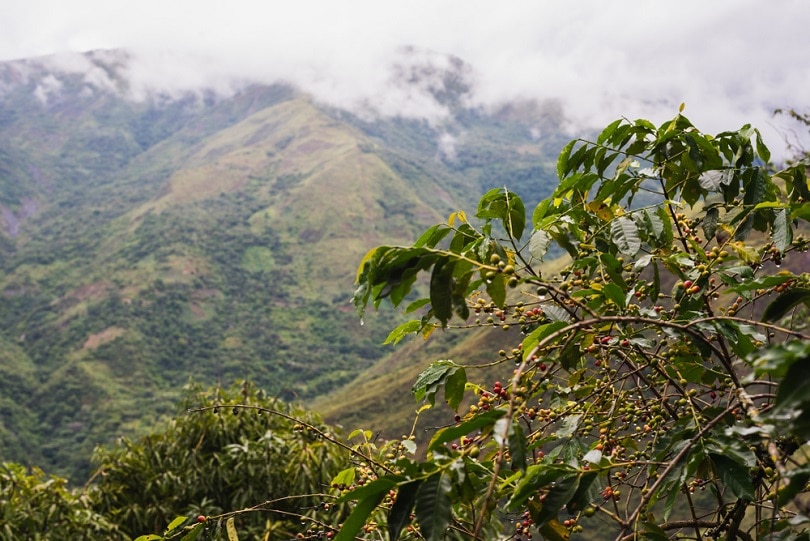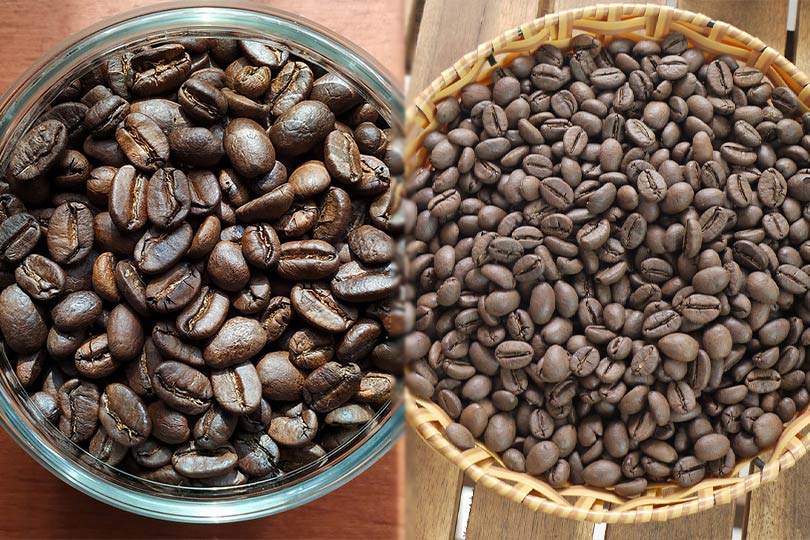
Coffee is a basic staple in many people’s lives. We drink it in the morning and afternoon, and we have come up with an endless variety of ways to enjoy it. Have you ever wondered where the coffee comes from, however?
It comes as a surprise to many coffee drinkers how much effort goes into growing the plant that will eventually be cultivated into their favorite hot beverage. One of those difficulties is the narrow space where coffee plants can grow.
Coffee plants are technically fruit-bearing plants that require a specific climate to thrive. Factors such as soil composition, elevation, and rainfall must all be carefully researched before the long process of growing coffee is started.

Climate Overview
Climate is the most important aspect of growing coffee. Although 50 countries have areas suitable for cultivation, the space is smaller than you may think.
For example, Brazil dedicates 27,000 square km to growing the crop. Not only is Brazil 3.2 million square km, but they have the largest space for growing coffee.
You can also look at it this way: every cup of coffee requires 1.4 square feet to grow. That space adds up even if you only have two cups per day.
Not only is a large portion of earth required to plant, grow, and harvest the plant, but it also has to be done in specific locations to ensure the quality of coffee beans we are all used to.

Location
Coffee is grown in the equatorial zone that lies between the tropic of Cancer and the Tropic of Capricorn. Also called the “bean belt”, this area of the earth typically has the ideal temperature and rainfall to successfully grow coffee plants.
Brazil, as mentioned, is the largest producer of coffee, but many other areas are close on their heels. Beans are exported from North, Central, and South America, along with the Caribbean, Africa, the Middle East, and Asia.
For the most part, Central and South America are the leading producers. The top five countries are Brazil, Vietnam, Ethiopia, Columbia, and Indonesia. Arabica and Robusta beans also come from Costa Rica, Guatemala, Nicaragua, El Salvadore, Honduras, and Mexico.
Temperature
Being close to the equator provides a warmer, tropical climate that coffee needs to thrive. A temperate environment without frost is imperative. The optimal temperature is between 64 and 73 degrees, though the sweet spot is usually 67 to 70 degrees.
Providing an even temperature day and night and throughout the year is important. While some variation is important for the different phases of the plant’s cultivation, too much of a dip or rise can be detrimental to coffee plants.

Sunlight
While sunlight often runs hand in hand with temperature, sunlight on its own is also important. In this case, farmers are careful to plant in areas where the coffee will not get full sunlight. Instead, coffee requires ample sunlight for part of the day with shade for the rest.
Many farmers will plant on the side of mountains or cliffs so the sun will be blocked for large portions of the day. A common alternative is to grow coffee beans with other overhanging foliage, so the canopy will create natural shade.
Elevation
There is a lot to be said for elevation. Experts have indicated coffee needs to be planted anywhere between 3,000 and 6,000 feet above sea level. Many also contend that high elevations produce a better harvest with more flavorful beans.
Coffee plants grown closer to 6,000 feet can have more subtle notes such as floral, fruit, caramel, and chocolate. It is not necessarily the elevation that is causing these details. Instead, the higher elevation in tropical areas tend to be cooler with better soil and less direct sunlight. It creates optimal growing conditions.

Soil
Soil is another reason why coffee plants thrive at higher elevations. As a rule, the plants require nutrient-rich soil that is moist and well-drained. Research has shown, however, coffee does very well when volcanic ash is mixed into the planting soil.
Typically, higher elevations will have a higher concentration of volcanic rock. These plants have done well in clay and alluvial soil, as well. The most important thing is the ground is fertilized, kept moist, but not drenched.
Rain
Rain is harder to control even in the most temperate climates. An annual rainfall of 1 to 1.5 meters that is spread evenly throughout the year is ideal. The” bean belt” usually has rainfall somewhere close to this amount.
Coffee crops are not equipped to handle torrential rain for extended periods, nor can they withstand an intense drought. With modern farming techniques, however, droughts are easier to handle and correct.


Growing Conditions for Different Coffee Plants
As you can see, the conditions to grow and harvest coffee plants needs to be precise to have a successful yield. It’s not just about the climate, either. Coffee is not an easy or quick hobby.
Coffee plants have three life phases. The first is growth. This is the time between the seed being planted, and the growth to majority that can take approximately four to seven years. Keep in mind, coffee doesn’t need to reach adulthood to flower and produce fruit, though it still takes between three to five years before it will bear fruit.
The second phase is productivity. This is where the plant should be producing fruit and flowering consistently. The time frame can vary widely between 15 and 25 years depending on the species, care, environment, etc.
The final stage is the decline. Once the coffee plant has reached this part of its life, the fruit cycle will become erratic, and the bean quality will slip. The decline can take up to 5 years.
Major Types of Coffee
There are two major types of coffee; Arabica and Robusta. Arabica beans make up 70 percent of the coffee we drink. It has a better flavor, less caffeine, and commands a higher price. It is harder to produce, and it’s susceptible to diseases and poor soil quality.
Robusta, on the other hand, makes up only 30 percent of coffee beans. It’s a strong, more bitter-tasting brew, but it is a hardier species. It can stand up to poor soil quantity, heavier rain, and drought, plus it has better disease resistance.
Needless to say, Arabica needs to be handled with more care than its hardier cousin. Additionally, it not only sells for more, but it costs more to produce because it is “wet” processed versus left to dry in the sun.

Why Researchers are Worried
The delicate climate of the “bean belt” is important for the ongoing production of coffee. Researchers have become concerned, however, due to the rapidness of global warming. The effects of the temperature change could decimate the coffee bean industry.
As mentioned, coffee beans need a temperature between 64 and 73 degrees. Anything warmer will accelerate bean ripening which degrades the beans. By 2050, researchers believe the average temperature to be closer to 83 degrees in the “bean belt”.
That much heat can stunt the growth of plants, turn the leaves yellow, degrade the seeds, and cause stem tumors that can ultimately kill the plant.
With increased temperatures also comes the possibility for increased rain. These two things combined can also reduce the growing area for many counties. Again by 2050, it is thought the growing area for coffee will be reduced anywhere between 38 and 89 percent.
Although the lower end of 38 percent may not sound too bad, it could wipe up growing areas completely for some of the smaller counties. Counties affected include Brazil, Guatemala, Costa Rica, Nicaragua, El Salvador, Honduras, and Mexico.
Finally, studies have already shown an up-tick in the berry borers which is a small insect that eats coffee plants. Borers are known to do extensive damage, and they thrive in warm areas. Coffee rust is another real threat, as it has already crippled the coffee industry during the turn of the century and again in 2011.

In Conclusion
Overall, coffee requires a specific climate to survive. It is a complicated plant that requires commitment and a lot of expertise and labor. When you drink your next cup, remember the effort and work that was done to produce a single cup of brew.
You might be interested: How to Drink Coffee in Space
Featured Image Credit: Rodrigo Flores, Unsplash















